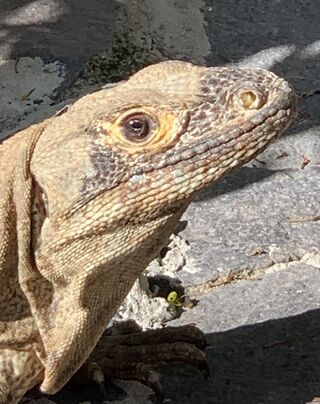Are Psychopaths Reptilian?
0
Psychopaths are often likened to snakes and called “reptilian.” Here’s why.
What images are conjured by the word “reptile?” A snake devouring its prey after either strangling or poisoning it? A crocodile submerged just below the water’s surface so only its eyes are visible, ready to strike? Or perhaps an unblinking lizard soaking in the heat of the sun? Psychopaths are often said to be akin to reptiles, but how so and why? According to Dr. Jacqueline Helfgott, “Clinical observations support the idea that psychopaths engage in acts of visual predation or a ‘reptilian stare.’”3 Growing up in a home with a psychopathic mother and sister, I experienced this all too often. It was an icy, cold, distant, unfeeling, yet penetrating look. Media depictions of psychopaths often focus on the eyes, stressing they are emotionless or hollow. Even the popular primer on psychopathy, Robert Hare’s Without Conscience, features on its cover a pair of eyes, deep-set and without pupils, staring at the reader.4 Some say a psychopath’s eyes are cold and foreboding, the eyes of a predator, while others say they have a hypnotic stare or a look of emptiness akin to the eyes of a reptile.Many reptiles, including most iguanas, are physiologically unable to blink which gives them the characteristic stare.5 On a recent trip to Costa Rica, I captured an example of that stare on camera which is the photo displayed in this blog. The psychopath’s stare, however, has no physiological explanation. It can be used as a tool for control or to signal dominance.
According to Dr. Jacqueline Helfgott, “Clinical observations support the idea that psychopaths engage in acts of visual predation or a ‘reptilian stare.’”3 Growing up in a home with a psychopathic mother and sister, I experienced this all too often. It was an icy, cold, distant, unfeeling, yet penetrating look. Media depictions of psychopaths often focus on the eyes, stressing they are emotionless or hollow. Even the popular primer on psychopathy, Robert Hare’s Without Conscience, features on its cover a pair of eyes, deep-set and without pupils, staring at the reader.4 Some say a psychopath’s eyes are cold and foreboding, the eyes of a predator, while others say they have a hypnotic stare or a look of emptiness akin to the eyes of a reptile.Many reptiles, including most iguanas, are physiologically unable to blink which gives them the characteristic stare.5 On a recent trip to Costa Rica, I captured an example of that stare on camera which is the photo displayed in this blog. The psychopath’s stare, however, has no physiological explanation. It can be used as a tool for control or to signal dominance.
The Psychopath and the Reptilian Cerebrotype
Prominent psychopathy researcher, Dr. J. Reid Meloy, in his seminal work, The Psychopathic Mind: Origins, Dynamics, and Treatment, presented his hypothesis establishing the reptilian cerebrotype (brain structure) as an anatomical underpinning for the psychopath’s personality disorder. After noting that the human brain’s limbic structures are key to affection and emotions, Meloy points out that they are absent in reptiles, and then states, “[Psychopaths] share with the reptilian cerebrotype an inability to socialize in a consciously affectionate and genuinely expressive manner.”1The reptilian brain has the capacity to hunt, defend its territory, feed, mate, compete and display aggression and dominance.2 These also happen to be traits that characterize most psychopaths.
The Reptilian Stare